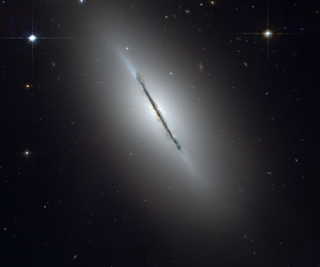Course Description
This course explores the applications of physics (Newtonian, statistical, and quantum mechanics) to fundamental processes that occur in celestial objects. The list of topics includes Main-sequence Stars, Collapsed Stars (White Dwarfs, Neutron Stars, and Black Holes), Pulsars, Supernovae, the Interstellar Medium, …
This course explores the applications of physics (Newtonian, statistical, and quantum mechanics) to fundamental processes that occur in celestial objects. The list of topics includes Main-sequence Stars, Collapsed Stars (White Dwarfs, Neutron Stars, and Black Holes), Pulsars, Supernovae, the Interstellar Medium, Galaxies, and as time permits, Active Galaxies, Quasars, and Cosmology. Observational data is also discussed.
Course Info
Instructor
Departments
Topics
Learning Resource Types
assignment
Problem Sets

A Hubble Space Telescope image of galaxy NGC-5866, seen edge-on. (Image courtesy of William C. Keel, University of Alabama, as presented on NASA’s Astronomy Picture of the Day Web site.)










